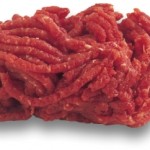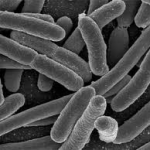High quality speakers and ample opportunities to network are on offer to delegates from the meat industry, farming and their service sectors at this year’s Red Meat Sector Conference.
We’ve been given a sneak preview of the content of the meat industry’s second annual conference, which will take place at the Rydges Lakeland Resort in Queenstown. The event is co-hosted once again by the Meat Industry Association (MIA) and Beef + Lamb New Zealand Ltd (B+LNZ).
Keynote speakers include clinical psychologist, author and self-confessed ‘wearer of socks’ Nigel Latta and Swazi Apparel’s Davey Hughes. They are joined by a dozen or so other presenters to focus once more on the core themes identified in the Red Meat Sector Strategy launched in May 2011.
After scene-setting presentations from Colin James of the Hugo Group and Richard Brown of European market research group GIRA, three sessions will cover the themes of the Sector Strategy.
In session one: meeting the needs of consumers will be the focus of Arron Hoyle of McDonald’s and Murray Johnston of Progressive Enterprises, while John Carroll of AVANZA avocado growers will look at managing market supply.
Australian and US perspectives regarding procurement will be explored in the second session, while best practices will be explored by B+LNZ Economic Service’s Rob Davison, Mark Paine of Dairy NZ and farming leader Doug Avery.
The conference will close with a session on behavioural change from Nigel Latta.
Two major social events are planned during the conference; a Welcome Cocktail Function, supported by Hamburg Sud, to be held on the evening of Sunday 15 July; and a Gala Dinner, sponsored by Maersk Line, to be held on the evening of Monday 16 July at which Davey Hughes of Swazi Apparel will speak.
For the first time, ANZ bank has taken the premier sponsorship role.
Don’t miss out: register online and find more information at www.mia.co.nz.
RED MEAT SECTOR CONFERENCE: THANKS TO SPONSORS
Premier: ANZ
Gala Dinner: Maersk Line
Welcome Cocktail Function: Hamburg Sud NZ Ltd.
Pre-networking drinks: Milmeq
Morning and afternoon teas: Triton Commercial Systems
Gold: AgResearch, Bell Gully, Ecolab, Milmeq and System Controls Ltd.
Silver: Industrial Research Ltd, NAIT Ltd, Port of Tauranga, SATO NZ Ltd and Sealed Air NZ.
Delegate bags: Bemis Flexible Packaging Australasia Ltd.
Other: Marfret Compagnie Maritime.
Published in Food NZ magazine (June/July 2012).




